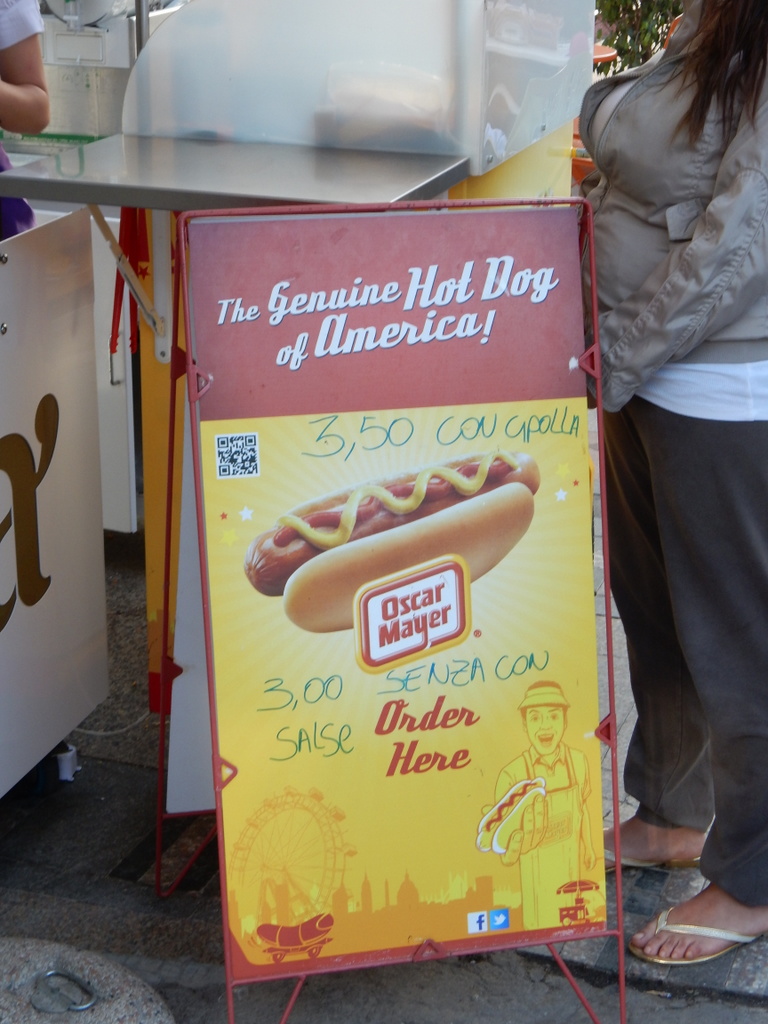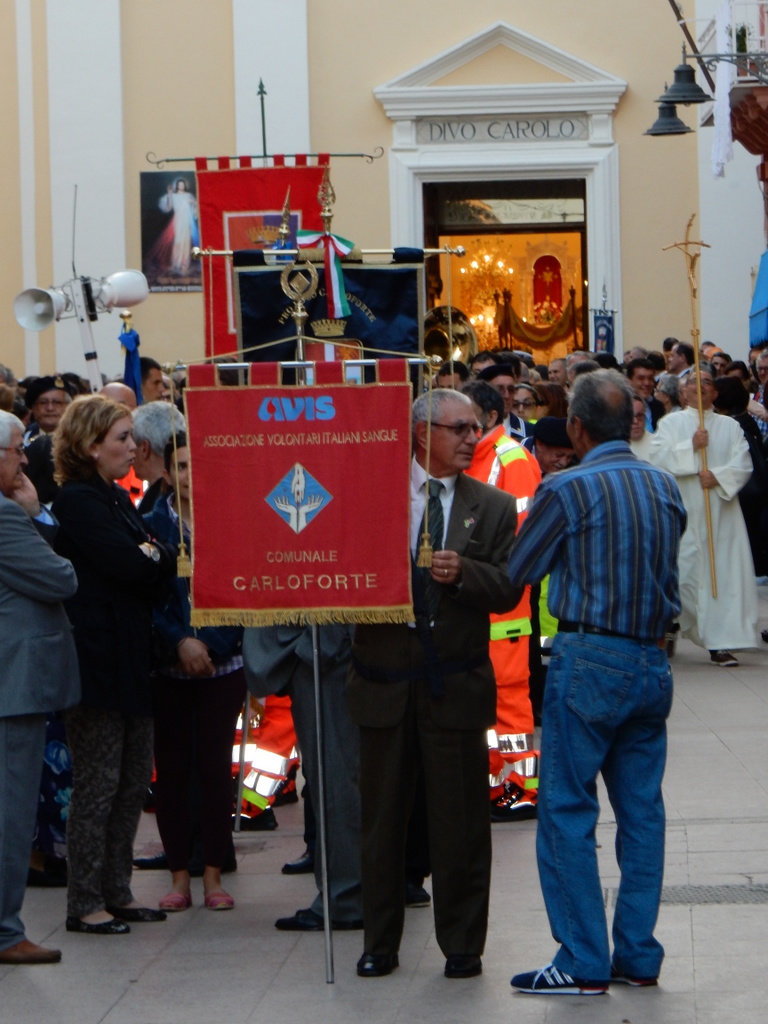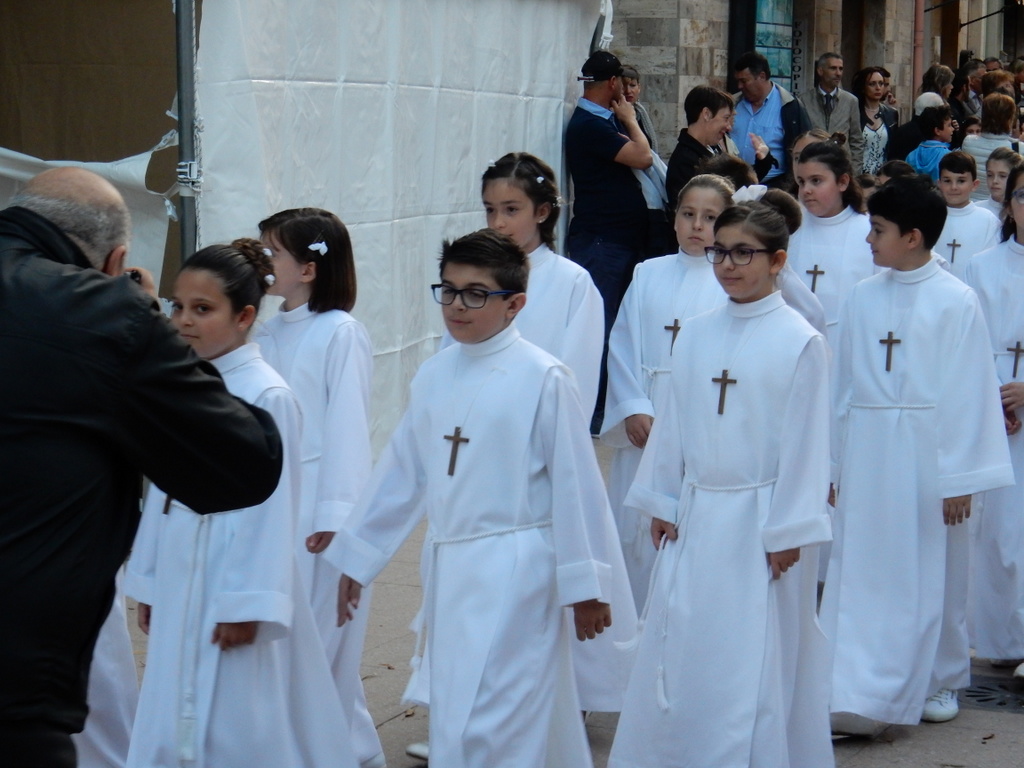
(Note: Posting of this entry was delayed for almost two weeks by issues with our our web site host, Aabaco, which is part of Luminate, which was recently spun-off by Yahoo, which by itself pretty much explains why we had a problem. Our website was also unavailable for most of that time. Hopefully, this will not be repeated).
We left Sciacca, Sicily at 6 pm on Wednesday, May 25 and crossed the Tyrrhenian Sea to Carloforte on Isola San Pietro just off the southwest coast of Sardinia. We motored for 12 hours before the southeasterly wind came up enough to sail. The wind forecast was spot on as the wind increased through the day on Thursday becoming 20 knots from the east and then 25 knots from the northeast as we rounded the southern tip of Sardinia. We had a poled out genoa and a mizzen set on a preventer almost the whole time that we sailed and arrived in Carloforte early on Friday morning (May 27). Our friends Michael and Britta of “Vera†tracked our progress for the last few hours from our AIS signal and were at the dock to greet us and help with lines as we backed in.
We have been in Carloforte for two weeks and this place has exceeded our expectations. We are in a small, secure marina run by the Sifredi family. It is quiet at night, the bathrooms and shower are clean and close enough to the boat, and there is almost always a good breeze. Just across from us is the town with cafes, restaurants, a Conad supermarket, gelaterias, fish stores, bakeries…pretty much all we need. I ordered some things from Amazon Italy that I could not get in town, plus some boat parts from Sweden and the UK, which is easy to do within the EU.

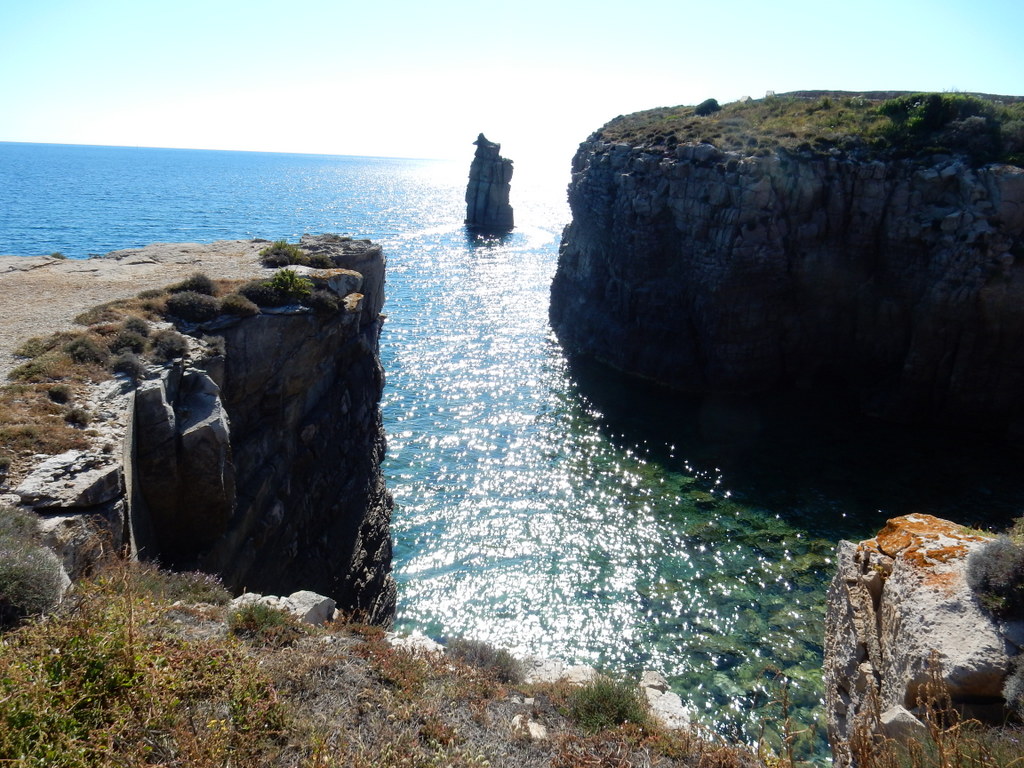
The island of San Pietro is only 19 square miles and has a population of less than 6500 inhabitants. It has an interesting history. It original inhabitants are from Liguria, the coastal area of Italy bordering France, by way of Tunisia. The Tunisian coastal island of Tabarka was given as a concession by the Bey of Tunis to the Genoese family of Lomelli in 1540, in return for the release of the captured pirate Dragut. The Lomelli family recruited Ligurians to colonize the island and undertake coral fishing. These Ligurian colonists spent two hundred years in Tabarka, Tunisia in relative isolation until relations with their Arab neighbors deteriorated, and the coral reefs were exhausted. Thanks to the King of Sardinia, Carlo Emmanuel III of Savoy, the Tabarkan community was relocated to the uninhabited island of San Pietro in 1741 where they founded the new town of Carloforte, named in honor of King Carlos. The Genoese fortress at Tarbarka was surrendered to the Bey of Tunis, but still stands.
Piracy was a huge problem for the southern coast of Italy, Spain, and Greece for hundreds of years, with the pirates predominately Arabs from the North African “Barbary” coast. Long stretches of the coasts of Spain and Italy were abandoned. The island of San Pietro, where Carloforte is located, was no doubt uninhabited in 1741 for that reason. A fort was built to protect the newly transplanted population (the “forte” in the name Carloforte). It was not enough. In September 1798, pirates based in Tunisia raided Carloforte killing many and abducting 800 persons to sell as slaves. The captives were held for more than five years until Napoleon intervened militarily to free most of them. He is honored with a statue, plaques and names in town. Our favorite cafe on the waterfront is the Cafe Napoleon. Lord Horatio Nelson, the English admiral, is also honored with a plaque outside the church for his help in fending off pirates.
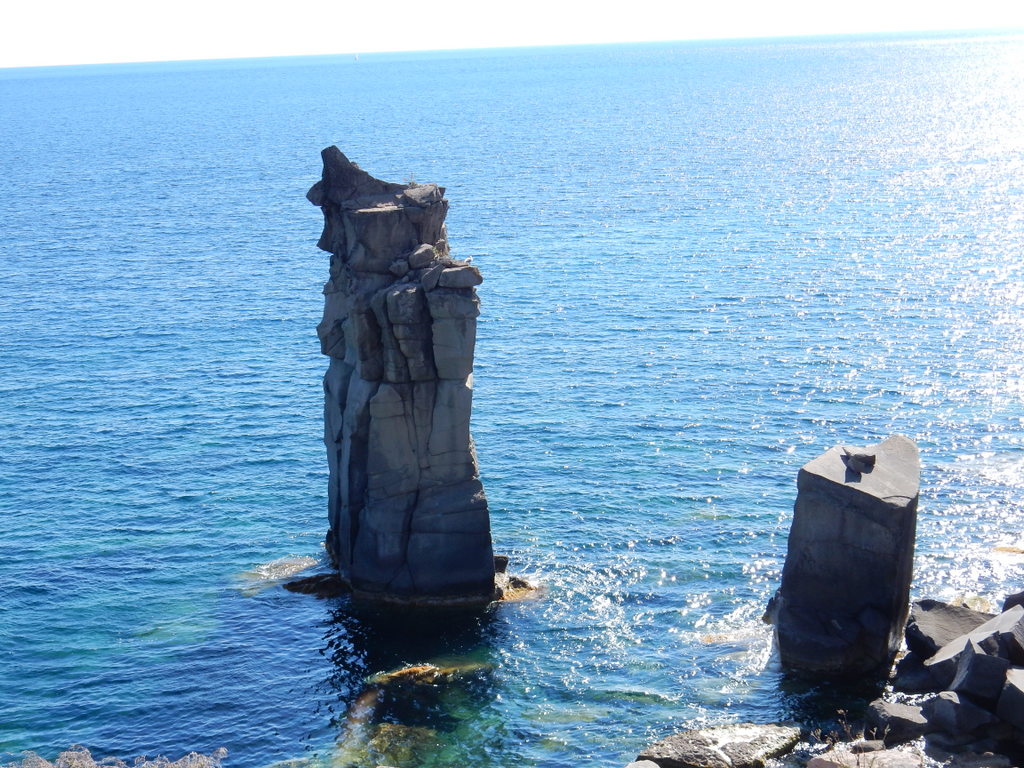

The Tarbakini speak Tabarkan, a dialect of Ligurian that evolved during their isolation in Tunisia. It does not sound like Italian. They also have their own customs and cuisine that can be sampled in many restaurants. Tuna fishing and canning was a major occupation since the Tabarkini were re-located to Carloforte and is still carried on today at a much reduced scale, although all of the tuna canning factories have closed. At the annual Giro Tonno (Tuna Festival) which we attended last week, they still show off their traditional method of catching tuna. At this time of the year, bluefin tuna migrate in schools in the San Pietro Channel, the body of water between Carloforte and Sardinia. Fisherman direct the tuna through a complex set of net barriers until they reach the “death chamber” where they are pulled out of the water and impaled on spikes in an act known as “matanza” or “the killing”. Old photos show massive bluefin tuna being caught and even now they are typically 30 kilograms in size.
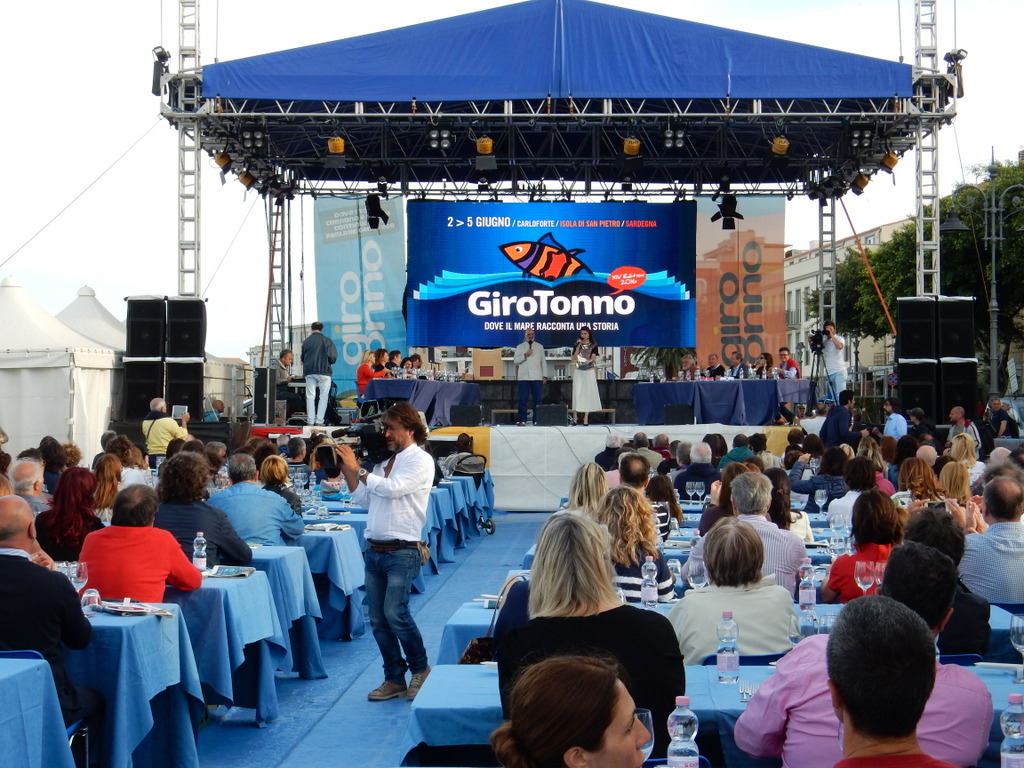
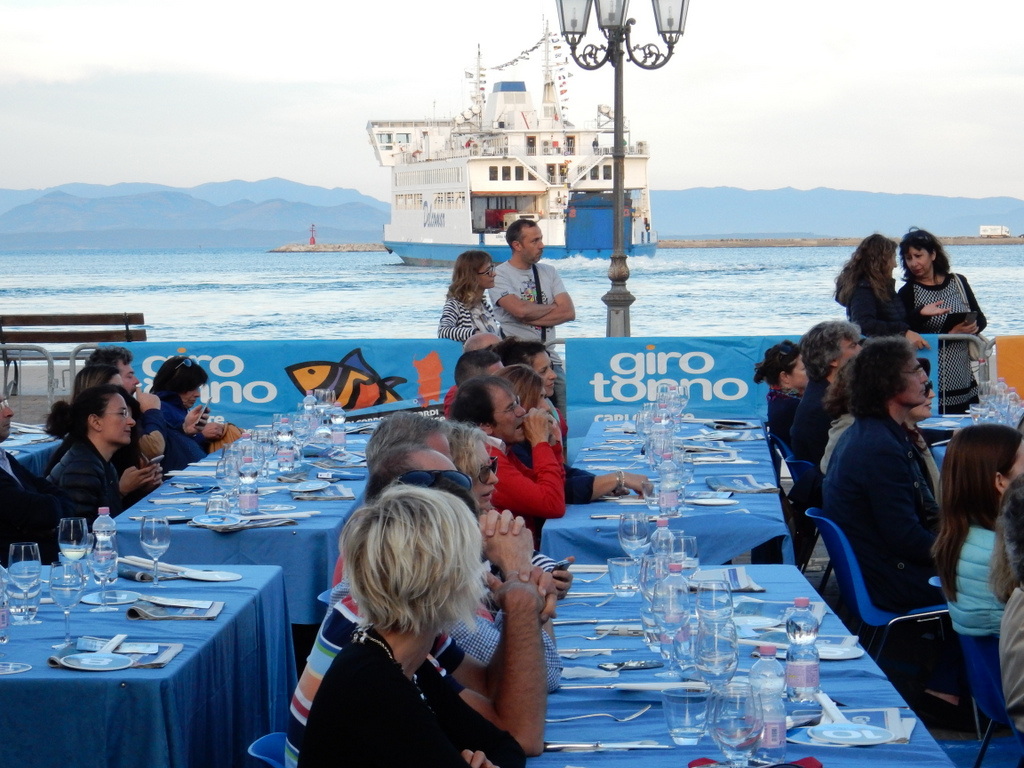
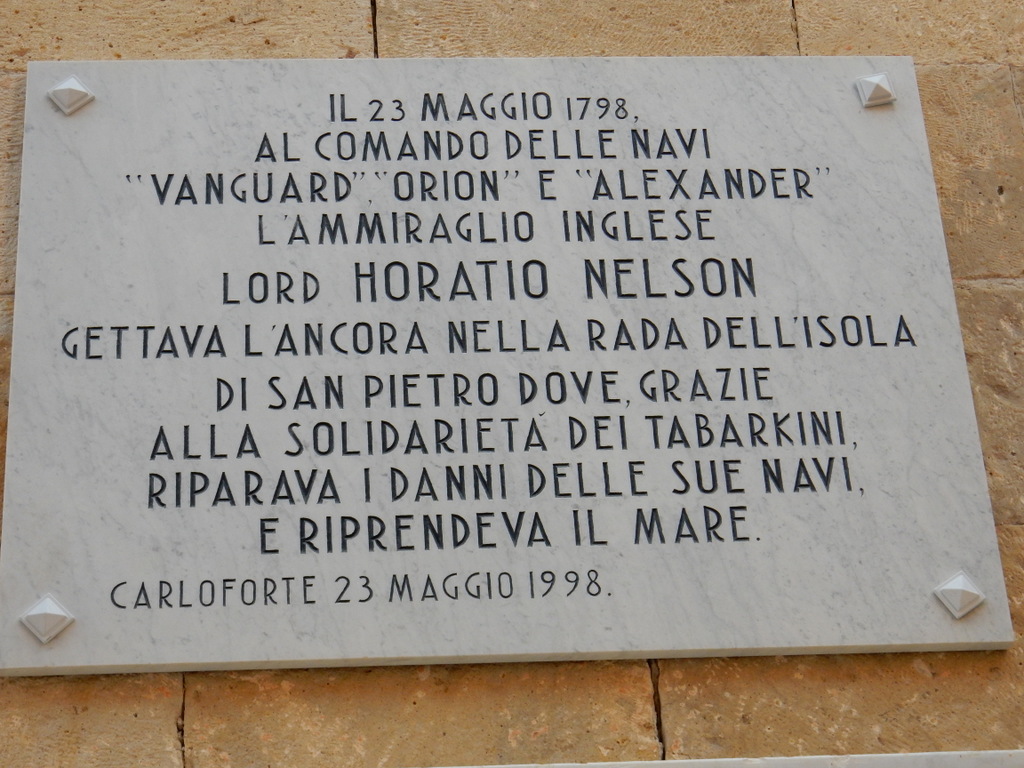
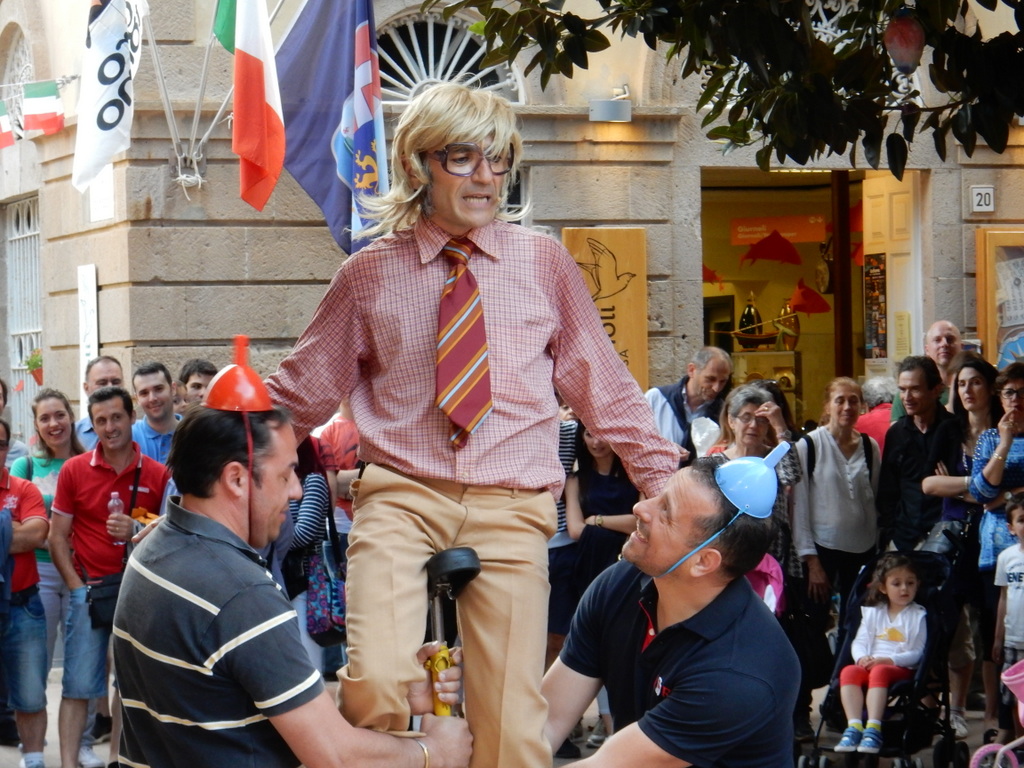
Tomorrow, we leave Carloforte to visit the bays and anchorages of the east coast of Sardinia, and to visit the police in the Sardinian capital of Cagliari to finish the formalities required to get our Italian Residency Cards.
M.
